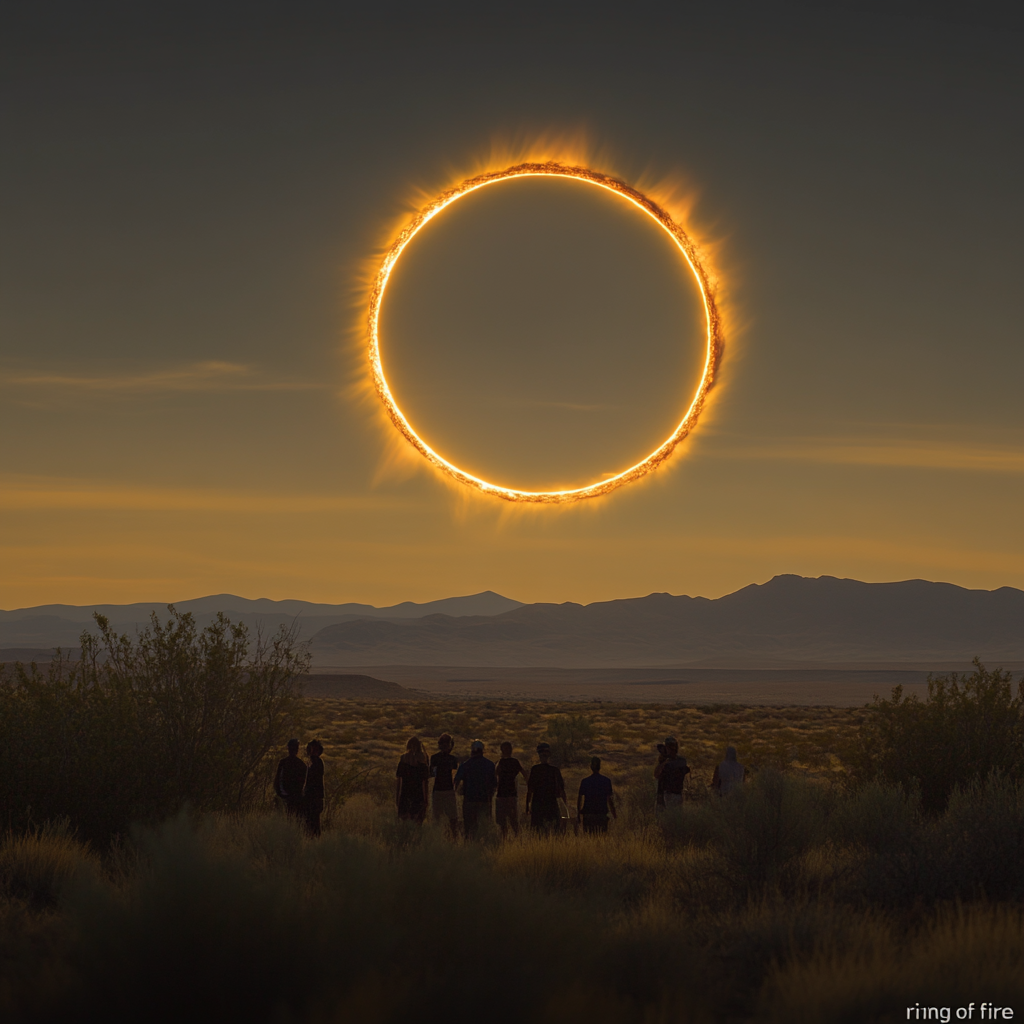
Visuals: 2024 Annular Eclipse’s Spectacular Celestial Showcase
The Cosmic Dance of Darkness: The Annular Solar Eclipse of 2024
Picture this: October 2, 2024. The world holds its breath, gazing upward in a moment where science collides beautifully with wonder — the annular solar eclipse, that tender moment when the moon steals the sun's limelight just enough to create that enchanting “ring of fire.” Can you feel the thrill in the air? It's a cosmic spectacle that brings out the star-gazer in all of us, and let me tell you, it isn't just something you watch; it’s something you experience with every fiber of your being.
What Makes an Annular Eclipse So Special?
Imagine this: the moon, in its eternal orbit, finds itself at the farthest point from Earth. It’s as if it's been on a diet and lost a few too many pounds, shrinking away just enough to tease us with its shadow. Unlike a total solar eclipse, where the moon could throw an all-out blackout party, the annular eclipse gives us a tantalizing glimpse of the solar disk, leaving a halo of shimmering light in its wake. The "ring of fire" is not just a phrase borrowed from a dubious rock anthem; it’s a phenomenon that highlights the exquisite and often overlooked dance of celestial bodies. It's nature playing a masterful game of hide-and-seek, and boy, are we enchanted.
Scope of the Spectacle
If you found yourself in certain corners of the globe, mainly South America, chances are you were front-row center for this cosmic event. The best seats in the house? The southern regions of Argentina and Chile. Meanwhile, in the U.S., the unlucky souls on the mainland could only catch a partial view, and let’s face it, that’s like getting the crust but missing out on the gooey, cheesy center of a pizza. Hawaii could see some action, but it’s a bitter pill to swallow when the main event is just out of reach. Other distant locales — American Samoa, Antarctica, Brazil, and various islands scattered across the Pacific and South Atlantic — also set their sights on the glorious display.
The Art of Capturing the Moment
Never has travel felt so justified as when photographers rush to remote and picturesque locations to document the symphony of light and shadow. Who wouldn’t hurry to Rapa Nui (that’s Easter Island for laypeople) to witness the annular eclipse with a local expert? Meet Josh Dury and eclipse aficionado Jamie Carter. Together, equipped with cameras and a thirst for knowledge, they unveil the secrets of the cosmos. What did Dury say? Overwhelming! And who could blame him? With guidance from Martín Tuki, a descendant of the island, it’s not just about the event; it’s about connection, heritage, and celebrating ancient tales under a skittering moon.
Meanwhile, Juan Mabromata captured the “ring of fire” from Puerto San Julian in Argentina, snapping photos that reveal the moment just before the full glory reveals itself, capturing what some cheekily refer to as “devil horns” — a wild nod to the light show’s fiery signature. And over at Canyonlands National Park in the U.S.? Photographer Jeff Pfaller embarked on a 20-hour trek with his teenage daughter, embracing challenges and bonding over their shared adventure. That’s what life is about: cosmic events and familial connections intersecting in the most delightful ways.
Emotions Unleashed
Witnessing an annular solar eclipse is no ordinary Sunday stroll. There’s the excitement, the elation, but let’s not forget the cold, biting air that sometimes accompanies such events, just like nature's own way of reminding us who’s in charge. Jamie Carter described those chilly moments before the eclipse as “incredibly cold,” but nothing compared to the euphoria of catching that fleeting glimpse of the “ring of fire,” which was just seconds away from being engulfed by clouds. It's a thrilling reminder that in the world of celestial phenomena, timing is everything — a beautiful irony that plays out in the cosmos as well as in our daily lives.
Families reunite over shared experiences, and stories are woven into the very fabric of our existence. Jeff Pfaller's journey embellished with warmth and laughter is a testament to what these celestial events can ignite in people. And let’s wrap in the global community vibe — folks from diverse backgrounds sharing that universal awe, embracing each other in moments of anticipation. There's a peculiar magic in this collective pulse of humanity that makes witnessing such events even more compelling.
Getting Ready: The Photographer’s Manual
You can’t just stroll out to capture such beauty on a whim. Oh no, my friend. If you want to snag that perfect shot, preparation is key. First, ditch those amateur hour gadgets. You’ll want a proper camera setup — think multiple cameras, time-lapse tech, and perhaps even your trusty smartphone for those candid notes. Imagine being on a journey — you’re not just a spectator; you’re participating in a grand cosmic dance and the preparation matters!
Scouting the perfect location is equally critical. A stunning sight not only captures the celestial event but adds an impressive backdrop that tells a story all its own. Rapa Nui and national parks are exceptional picks; the raw beauty can elevate your images to an entirely different level. Weather is your ally and your foe. Keep an eye on those forecasts. Better yet, have a backup plan. Just ask the savvy photographer who bailed on Crater Lake for Canyonlands Park — sometimes spontaneity pays off!
The Eclipses that Await
If you thought the 2024 annular solar eclipse was the end of the road, think again! The universe has a lot more to offer. 2025 brings two partial solar eclipses, perfect for honing your photography skills. And then, mark your calendars for 2026—a total solar eclipse that promises to be nothing short of awe-inspiring. Finally, let’s not forget the 2027 phenomenon, often dubbed the "eclipse of the century." It’s a celestial buffet, and you won’t want to skip a single course.
Wrapping Up
The annular solar eclipse of 2024 wasn’t merely a fleeting moment in time; it was a celebration of existence, evoking wonder and connection. Whether you were one of the lucky souls who witnessed it in person, or you simply devoured the stunning images shared worldwide, this spectacle will etch itself into the annals of your memory like an unforgettable dream.
Want to stay up to date with the latest news on celestial phenomena, neural networks, and the burgeoning world of automation? Subscribe to our Telegram channel: @channel_neirotoken. Keep your eyes to the skies and your heart open — the universe has treasures waiting just for you.

